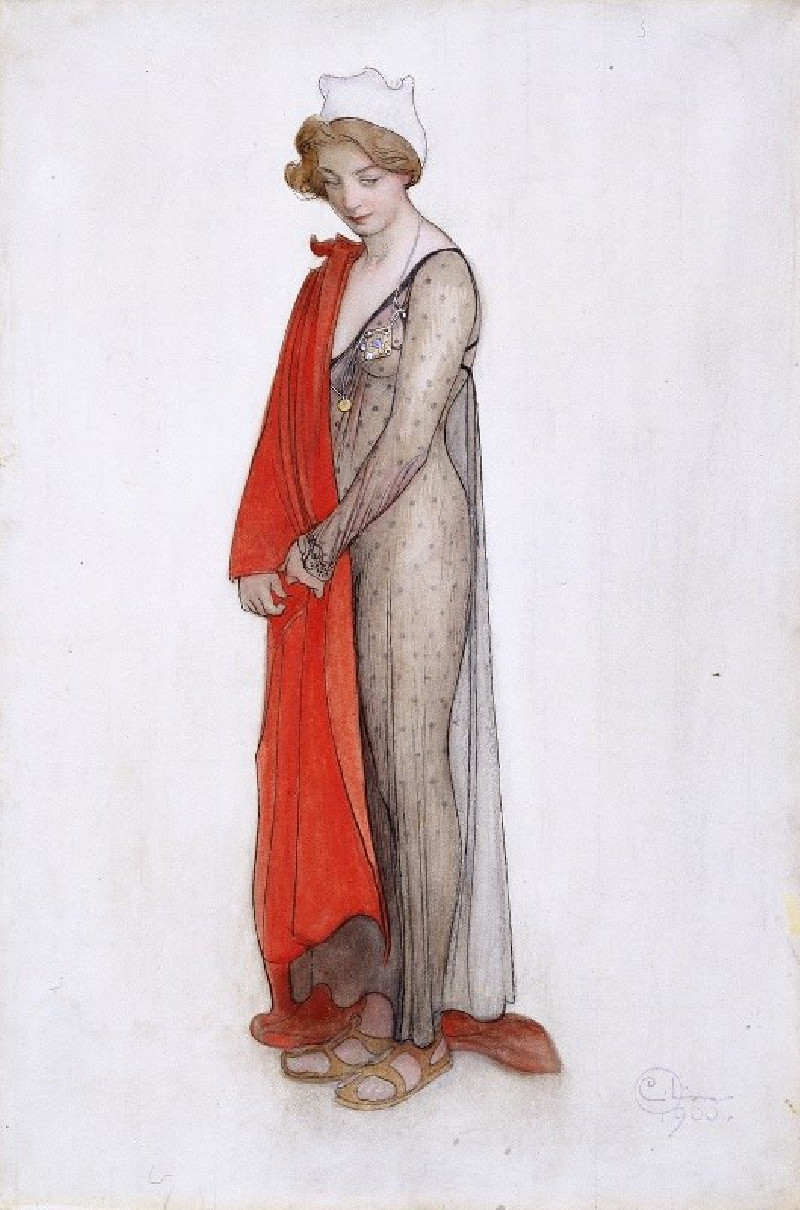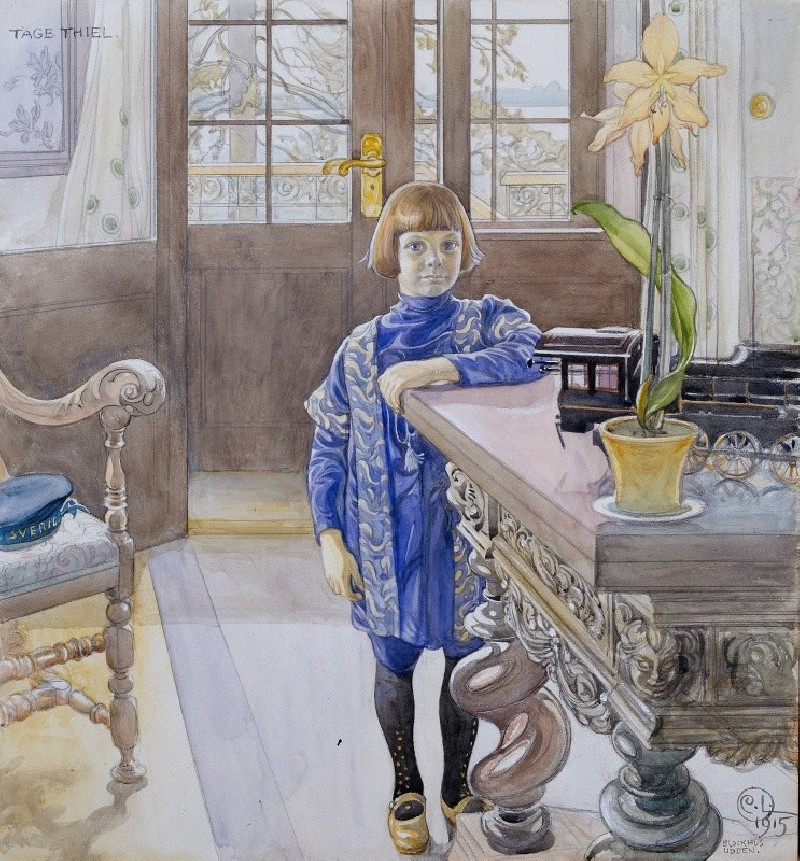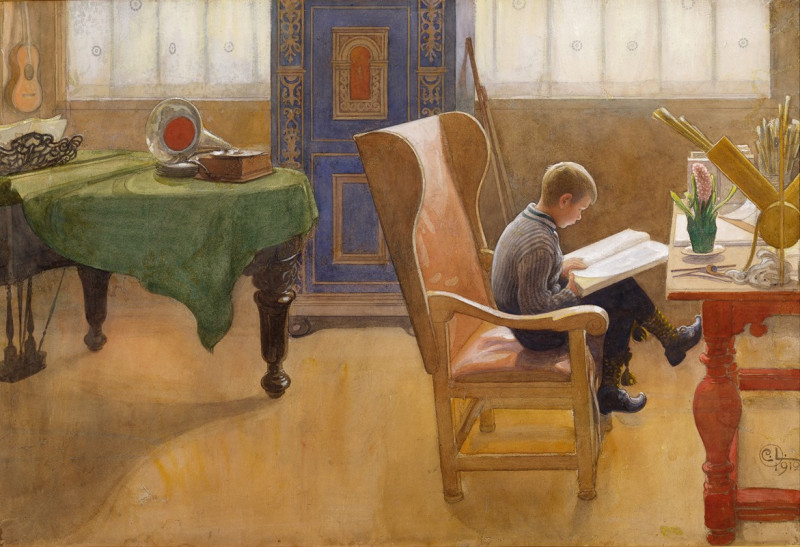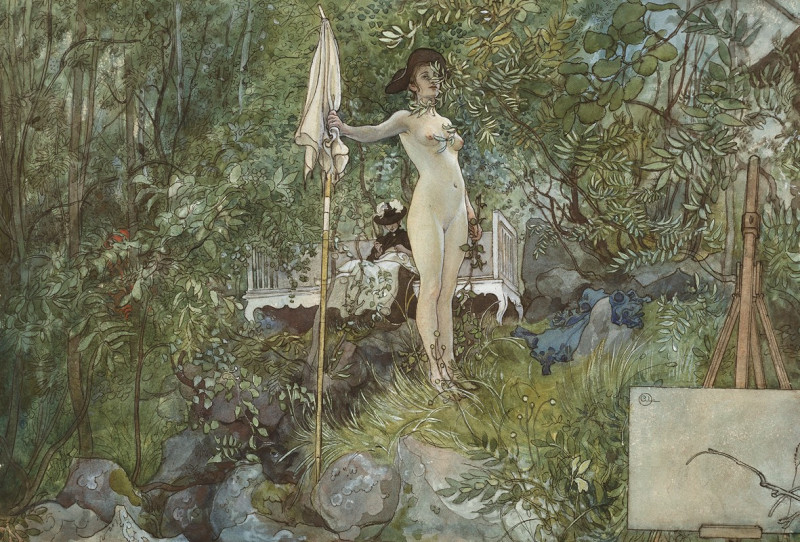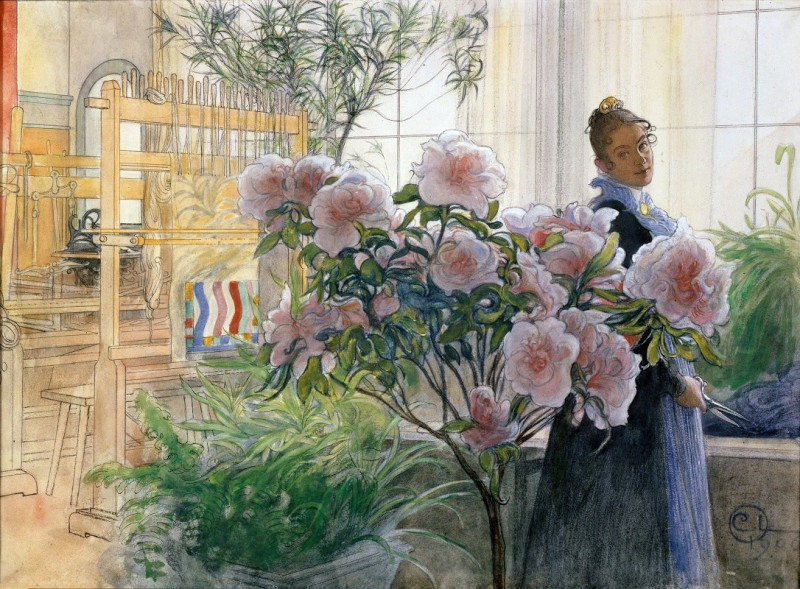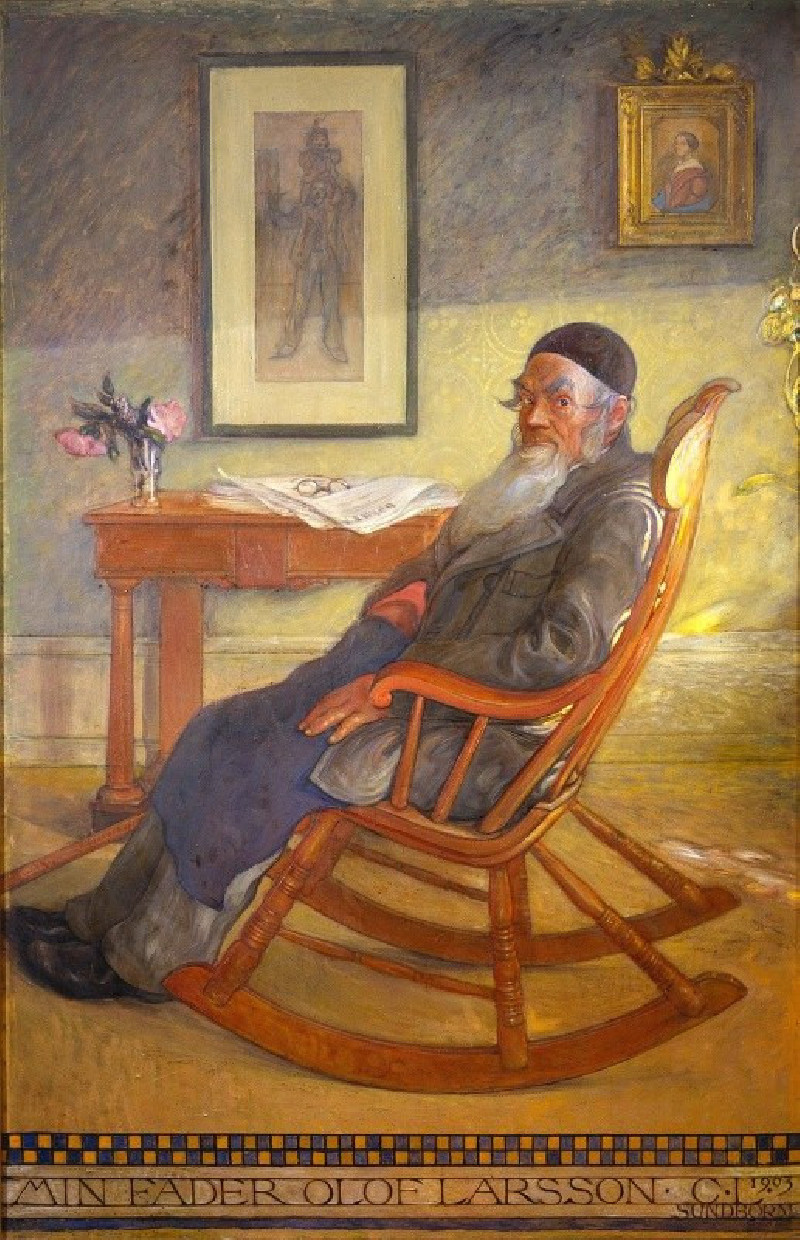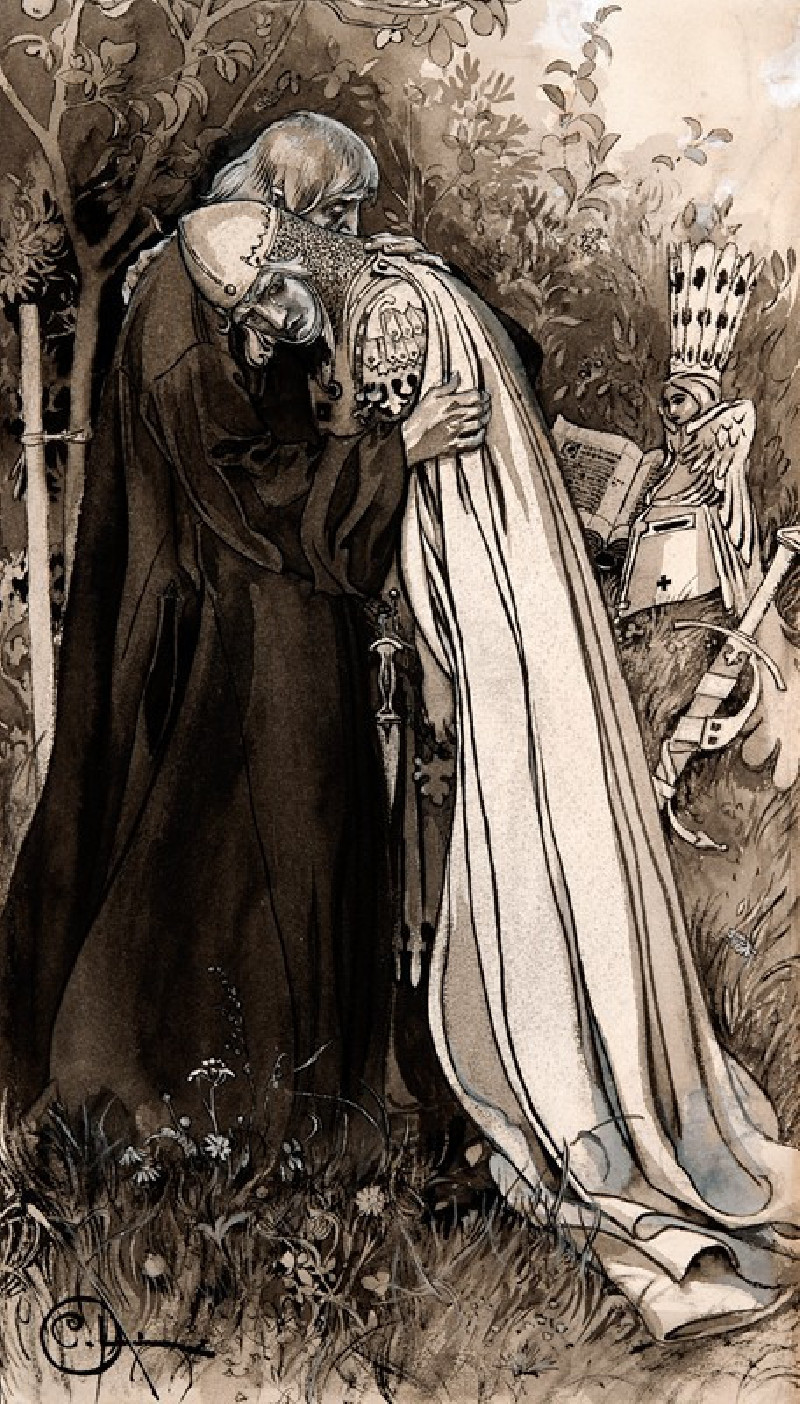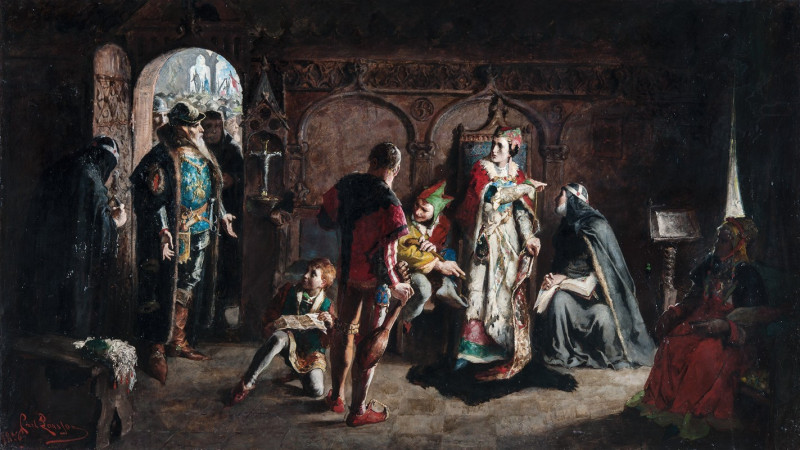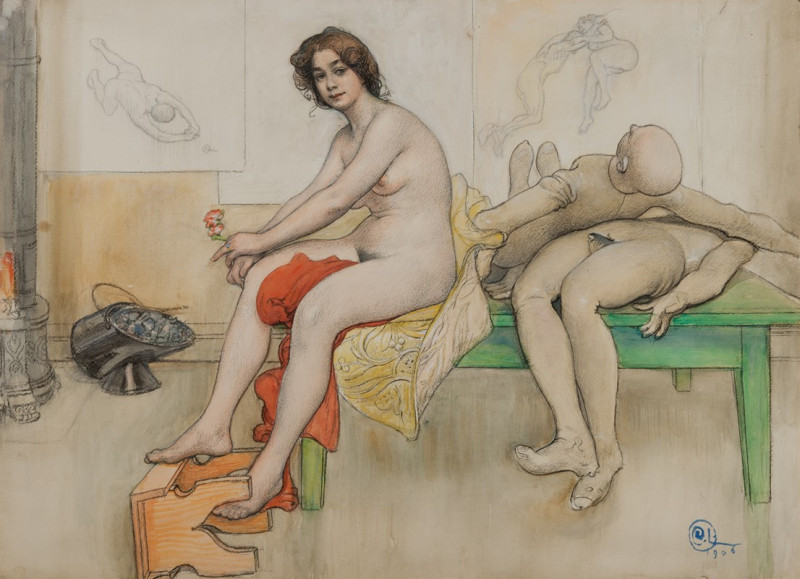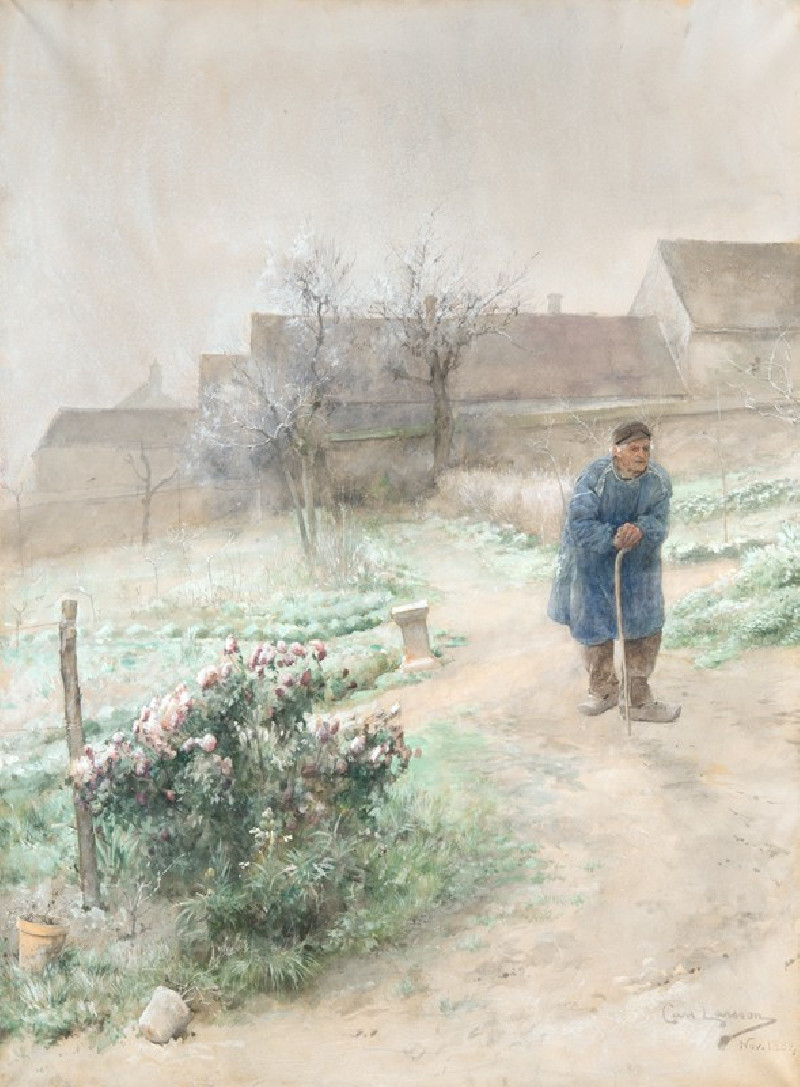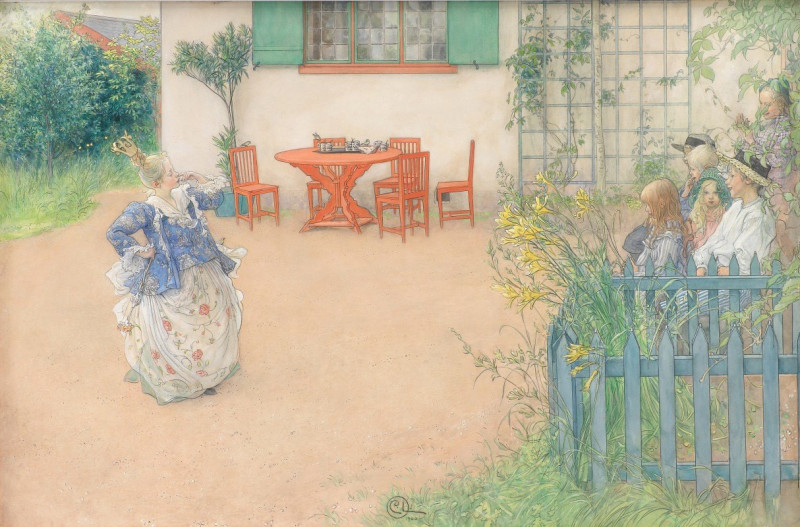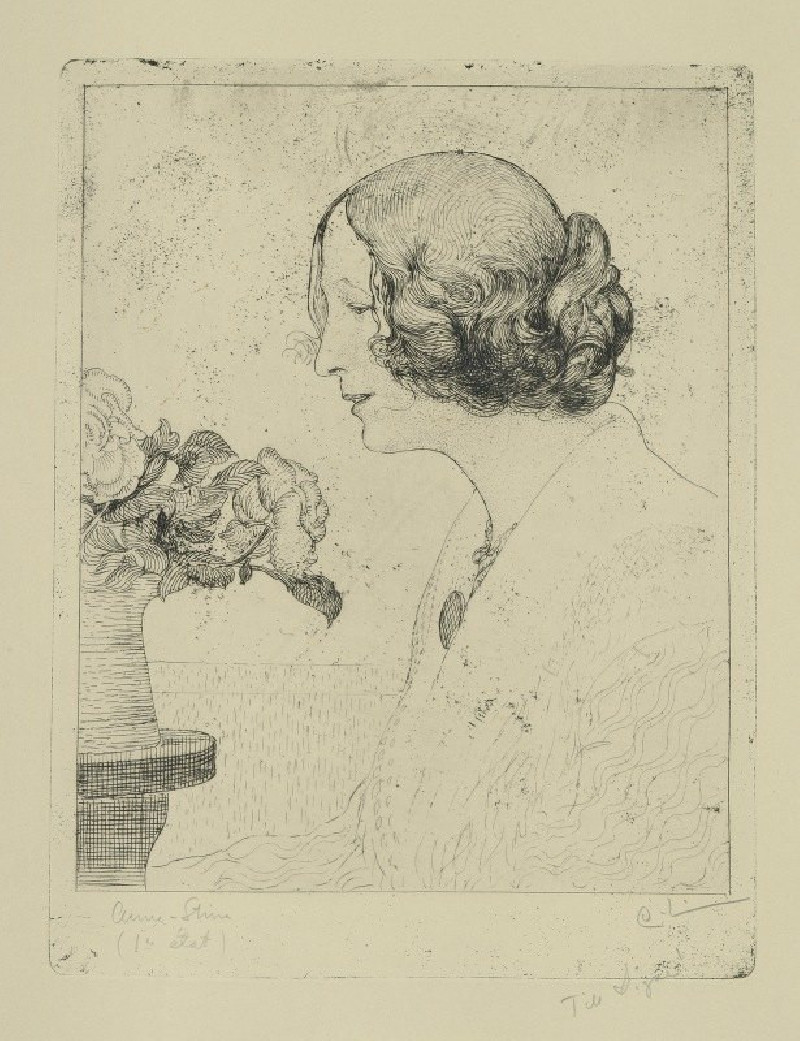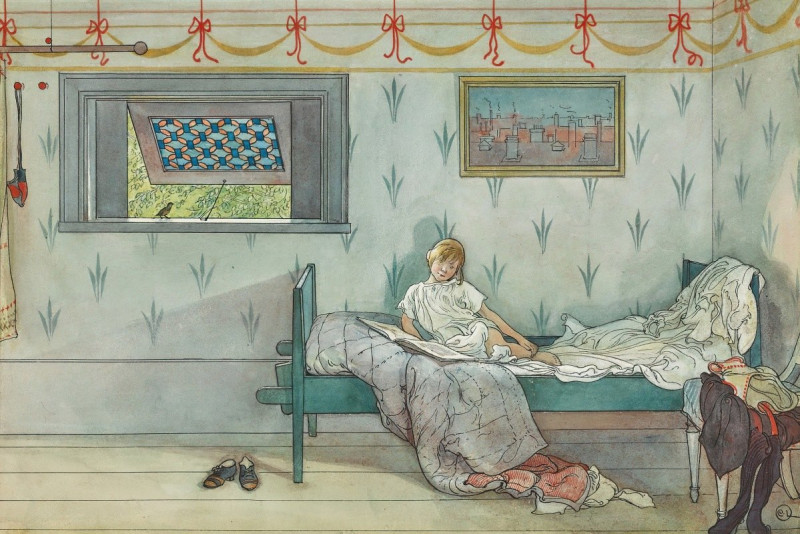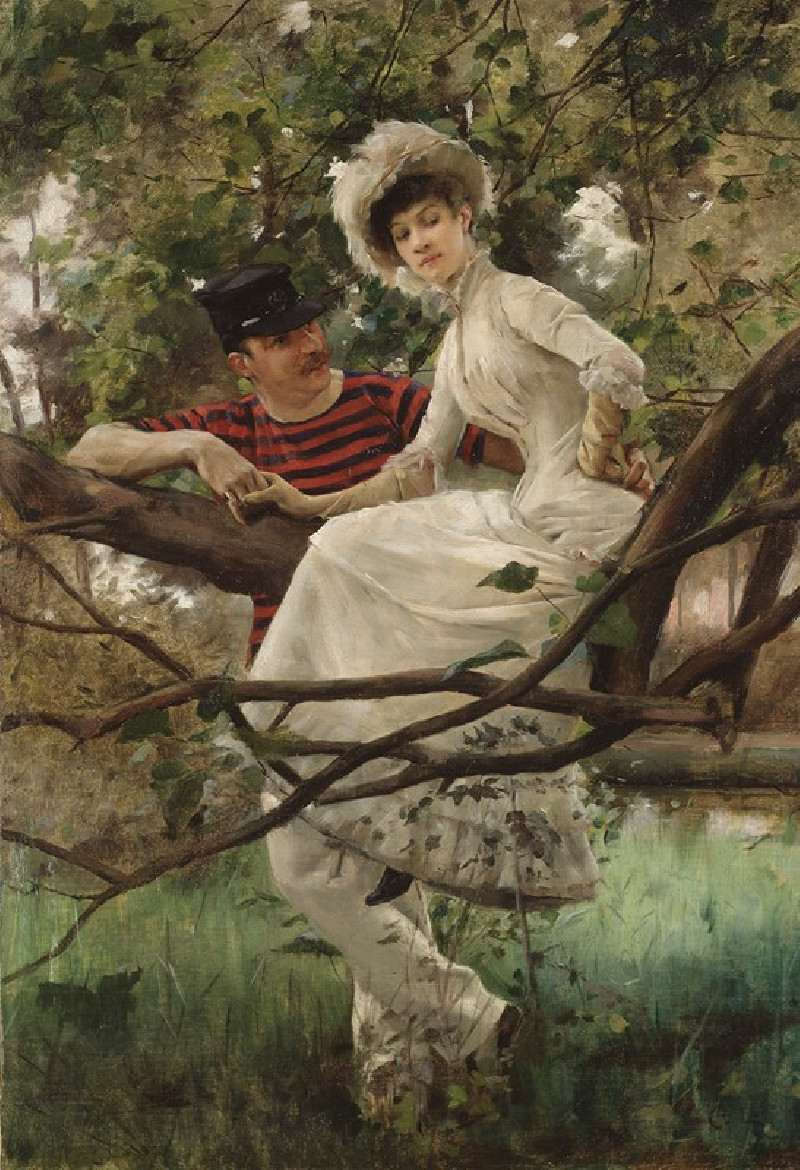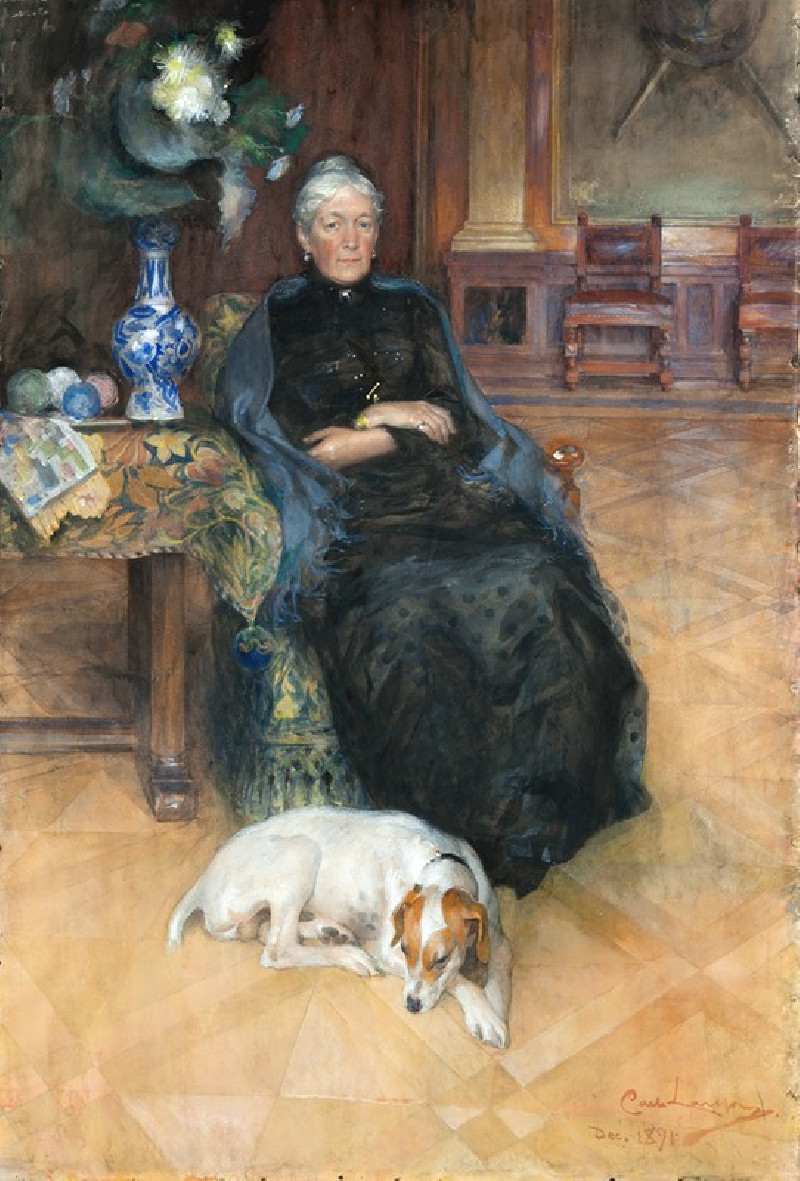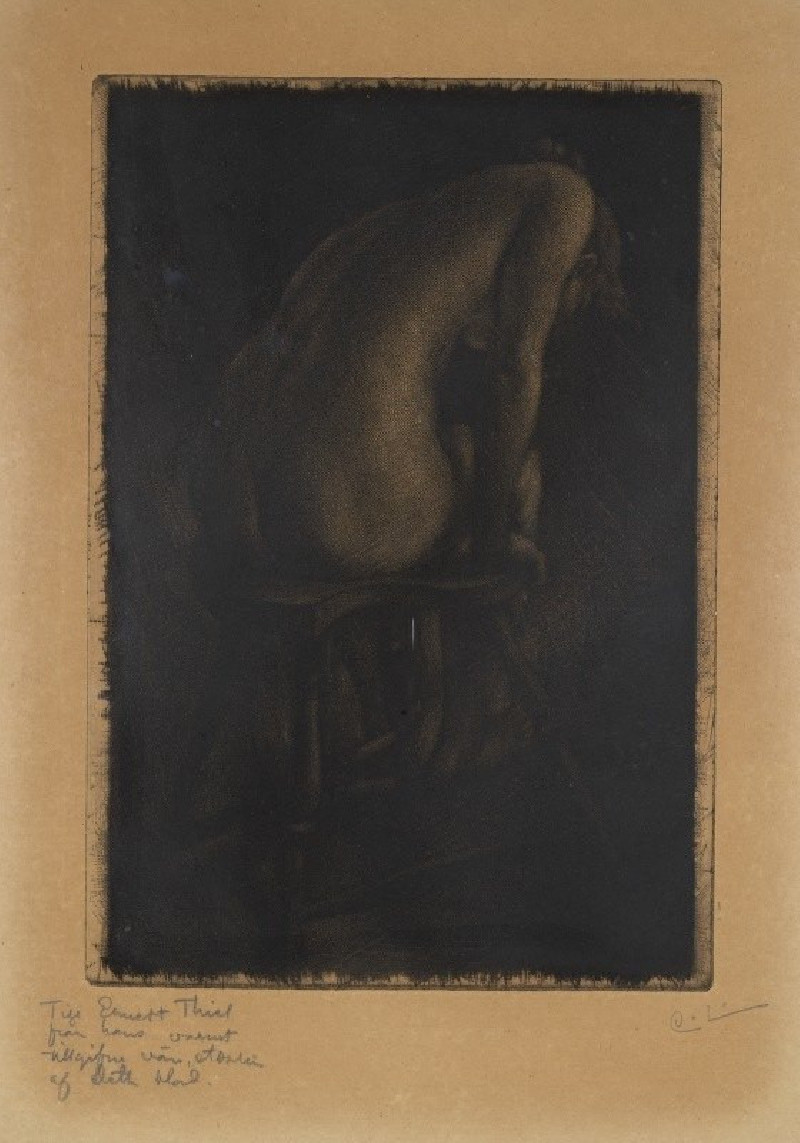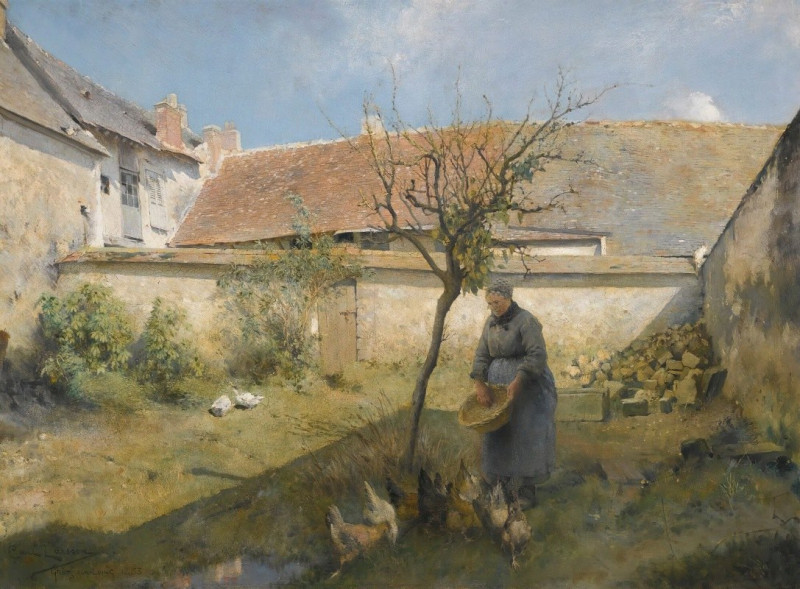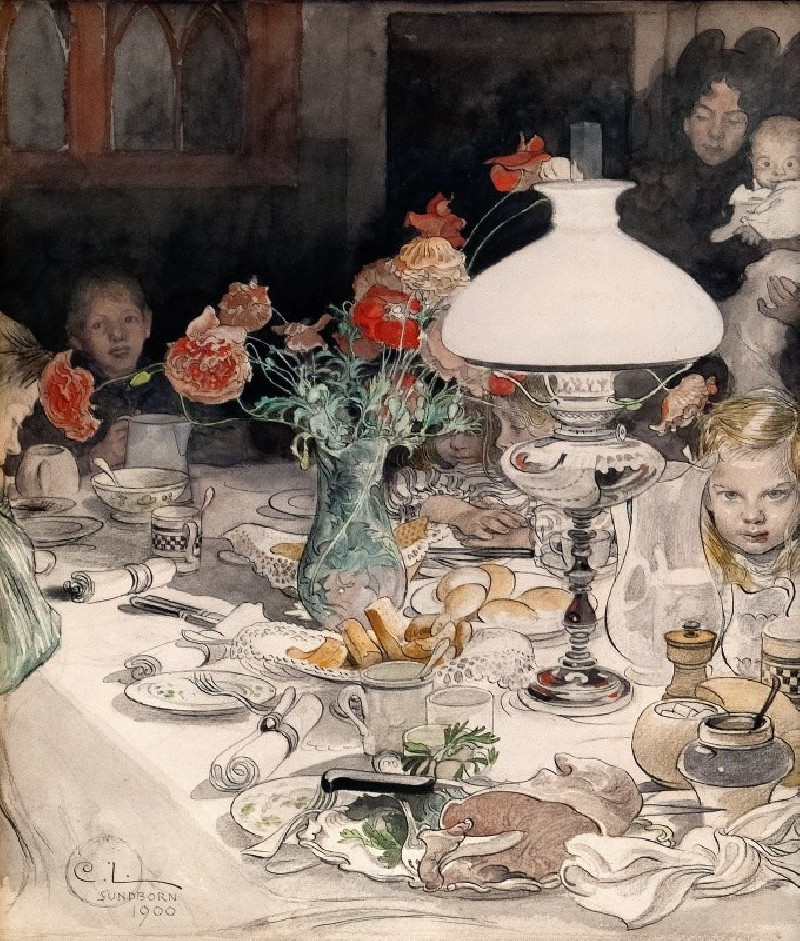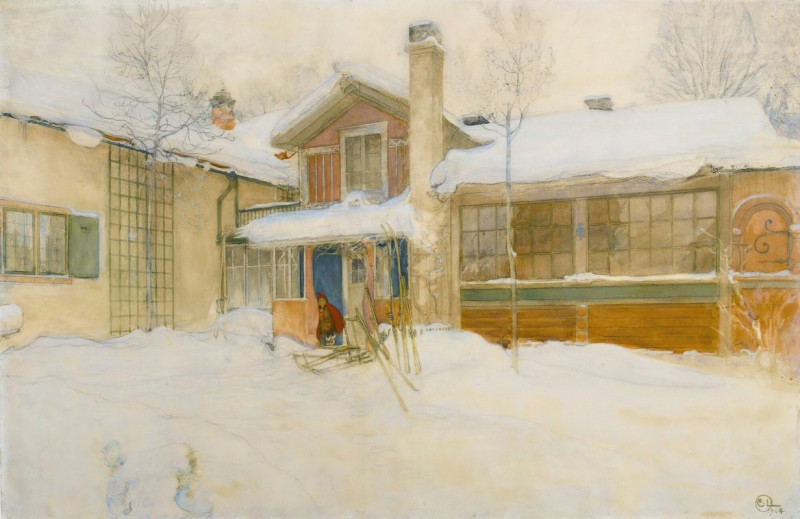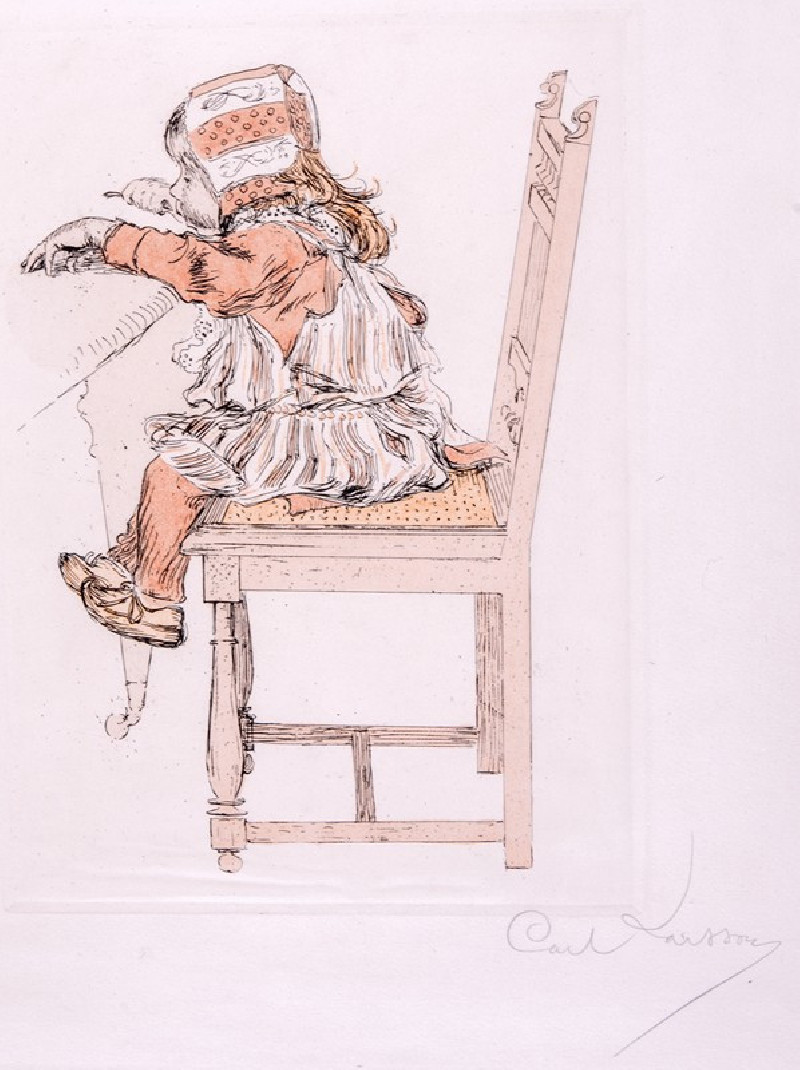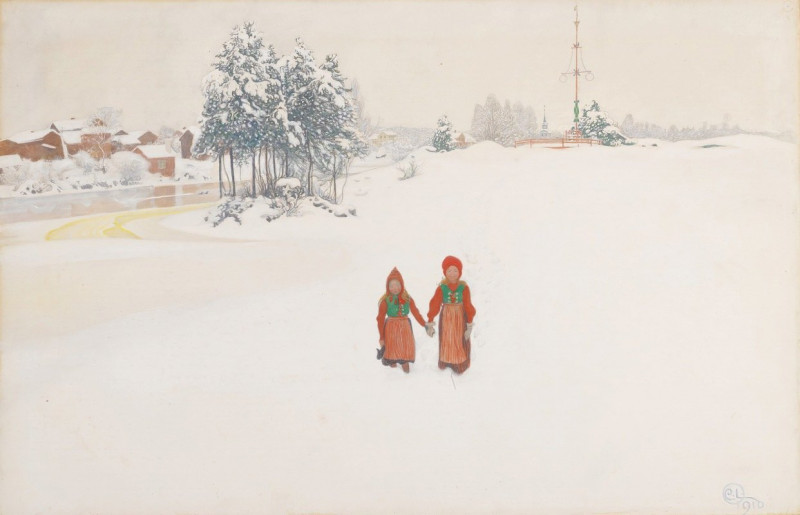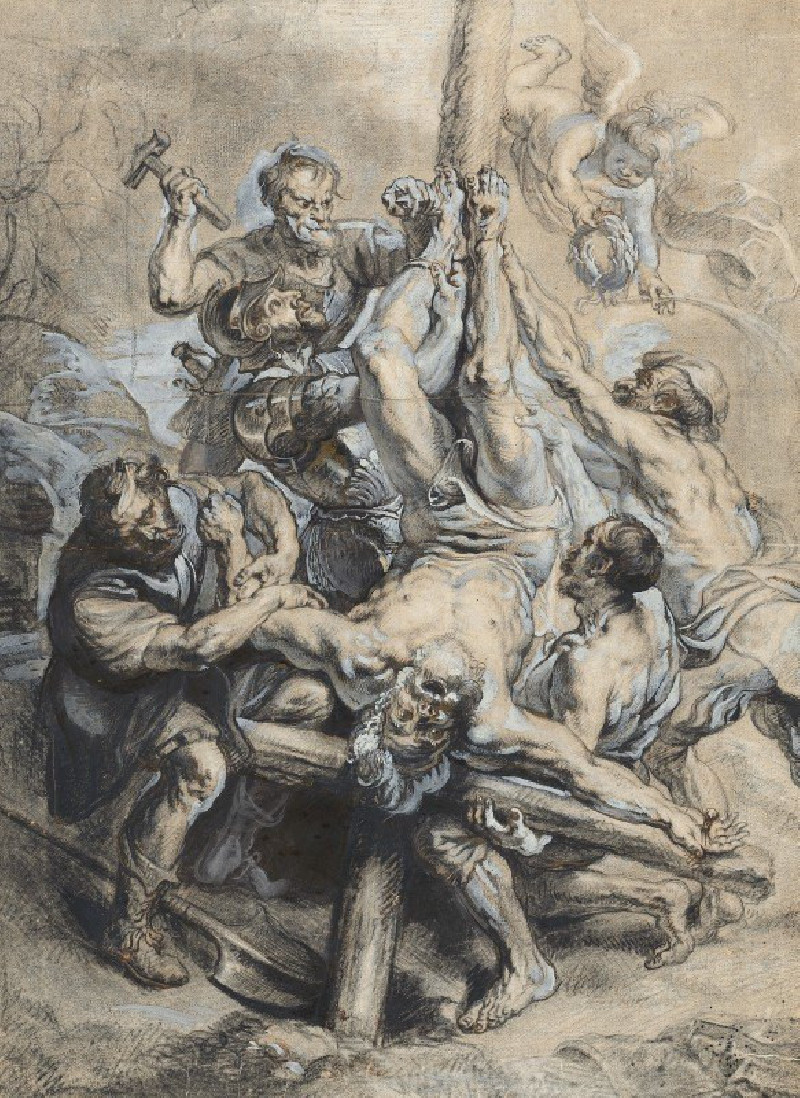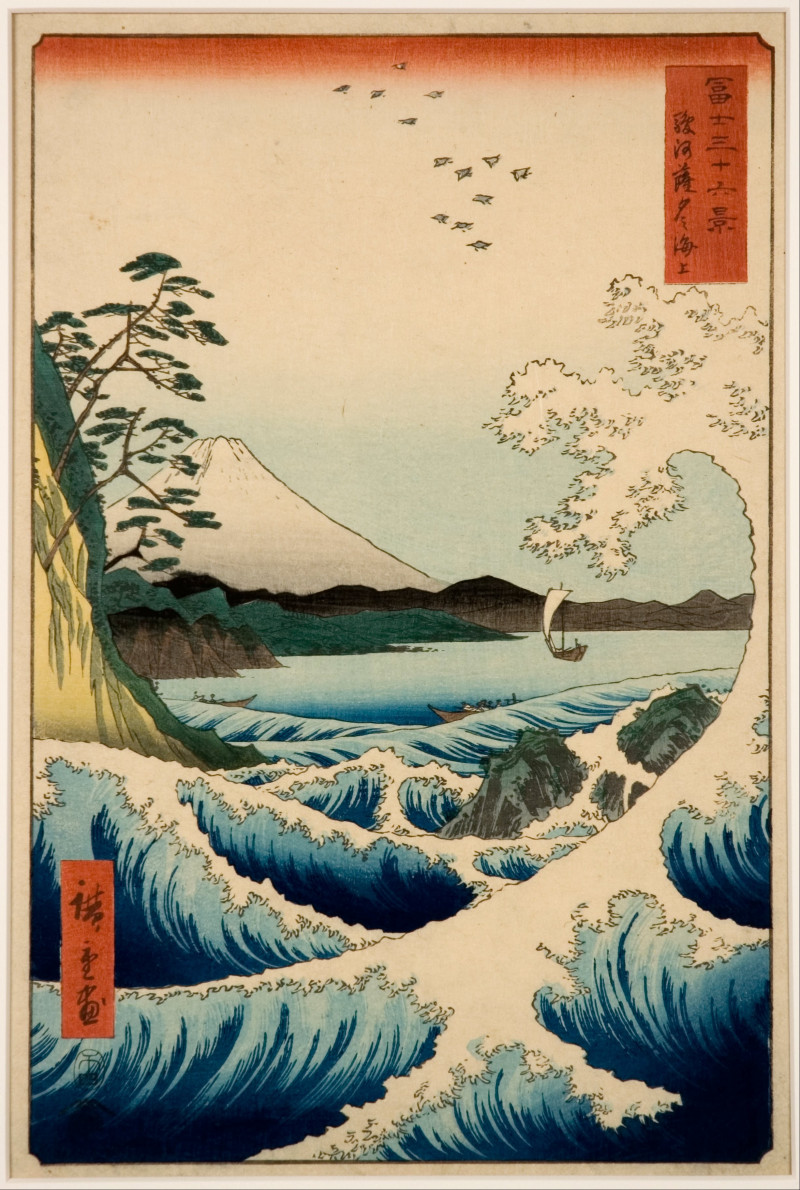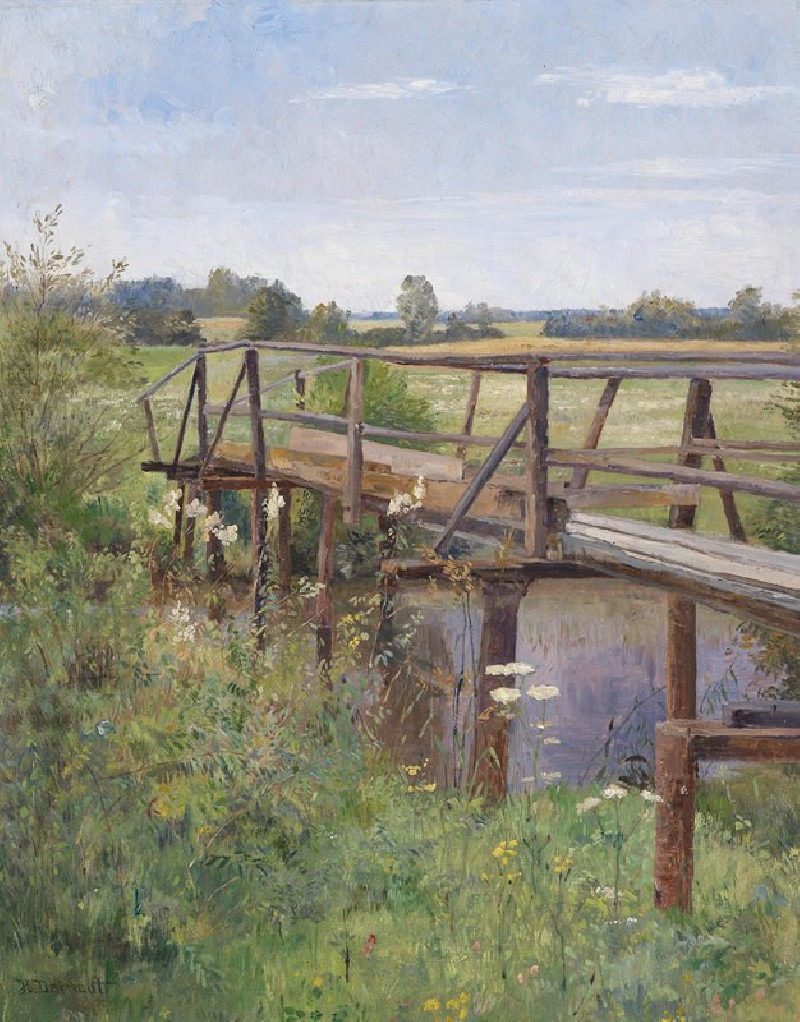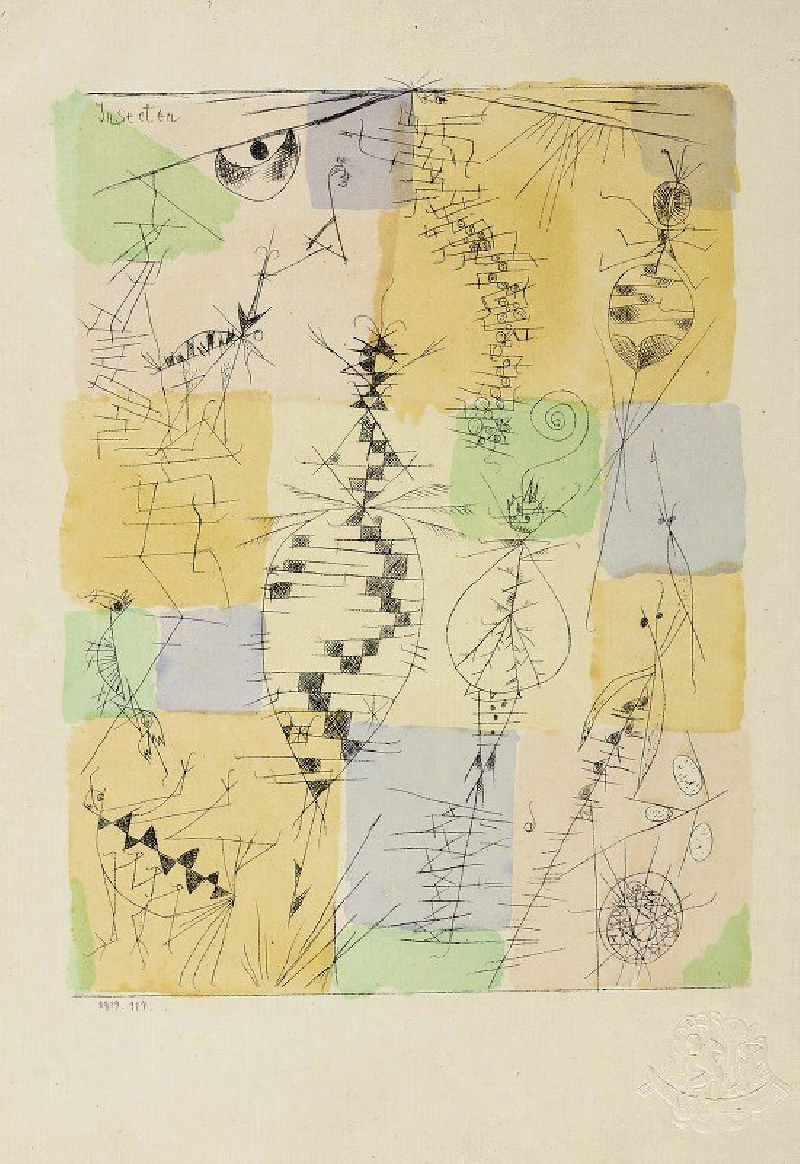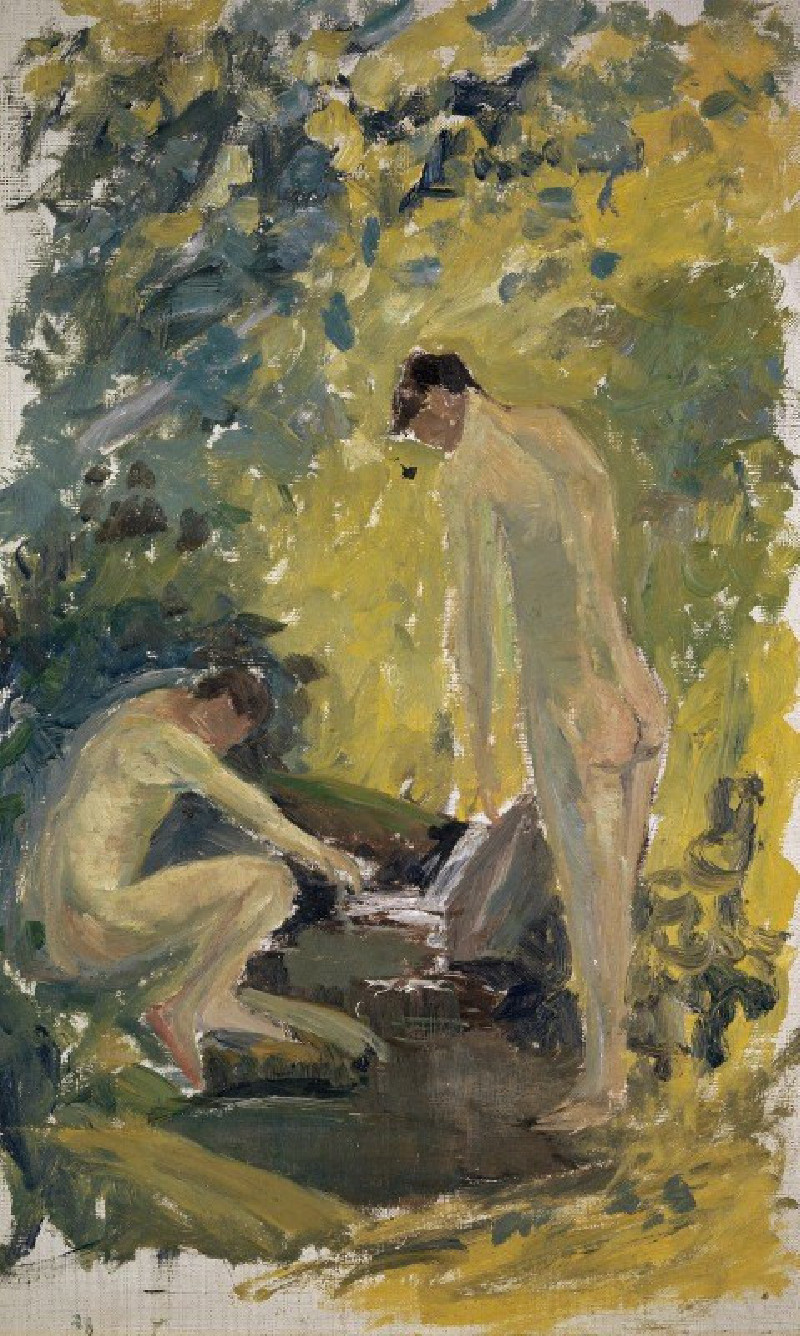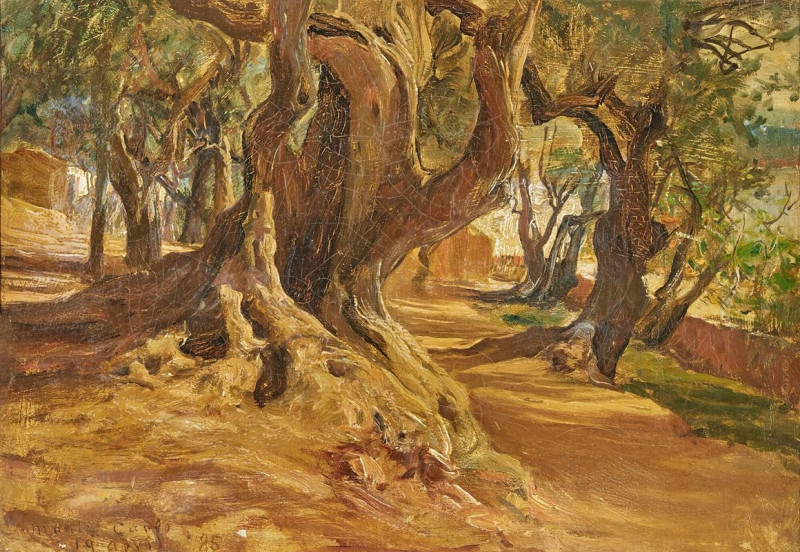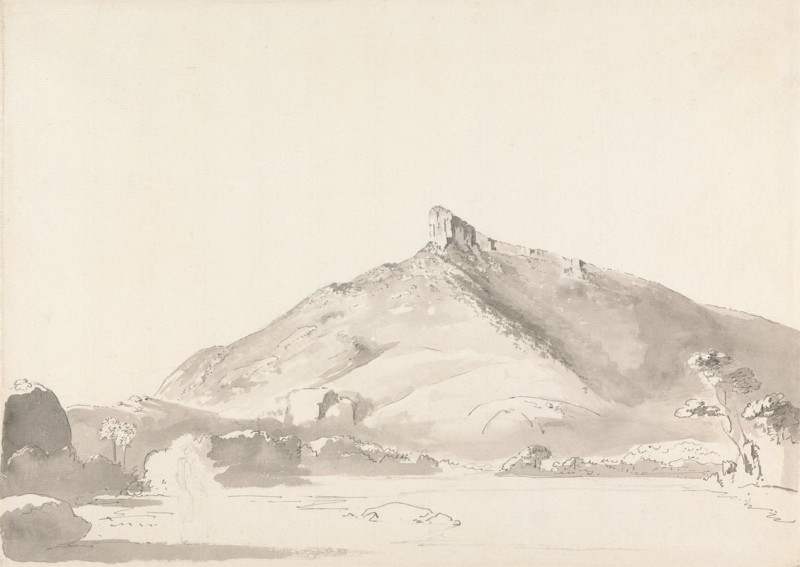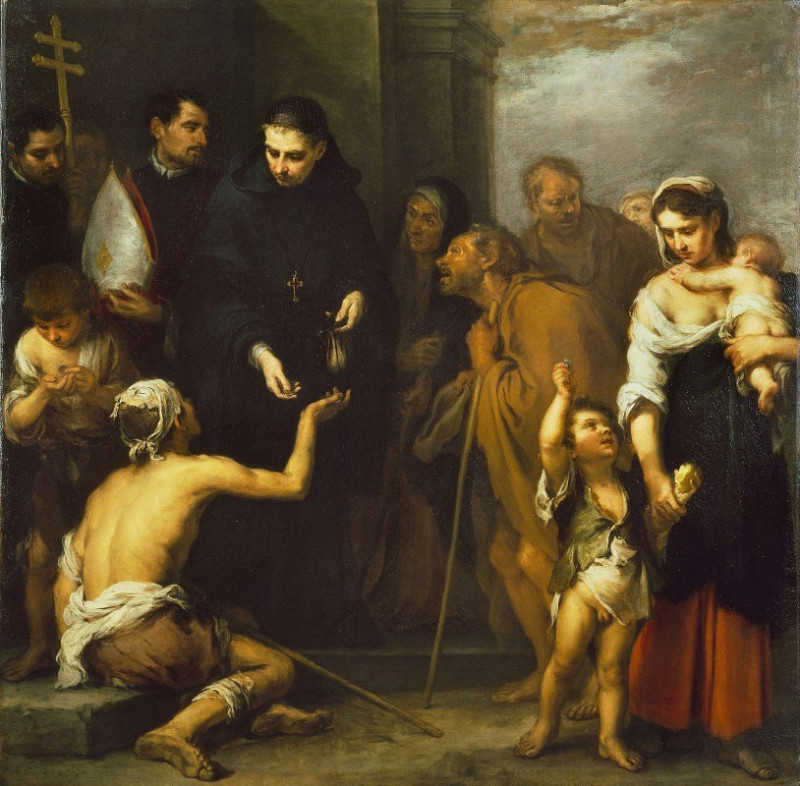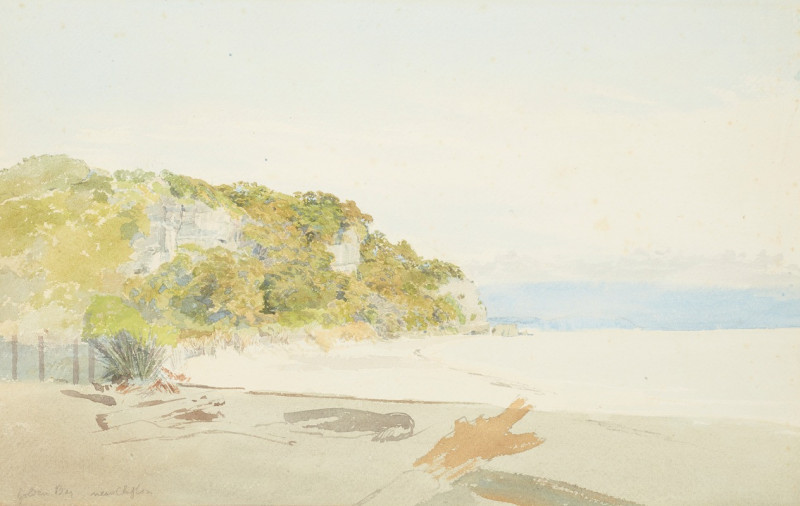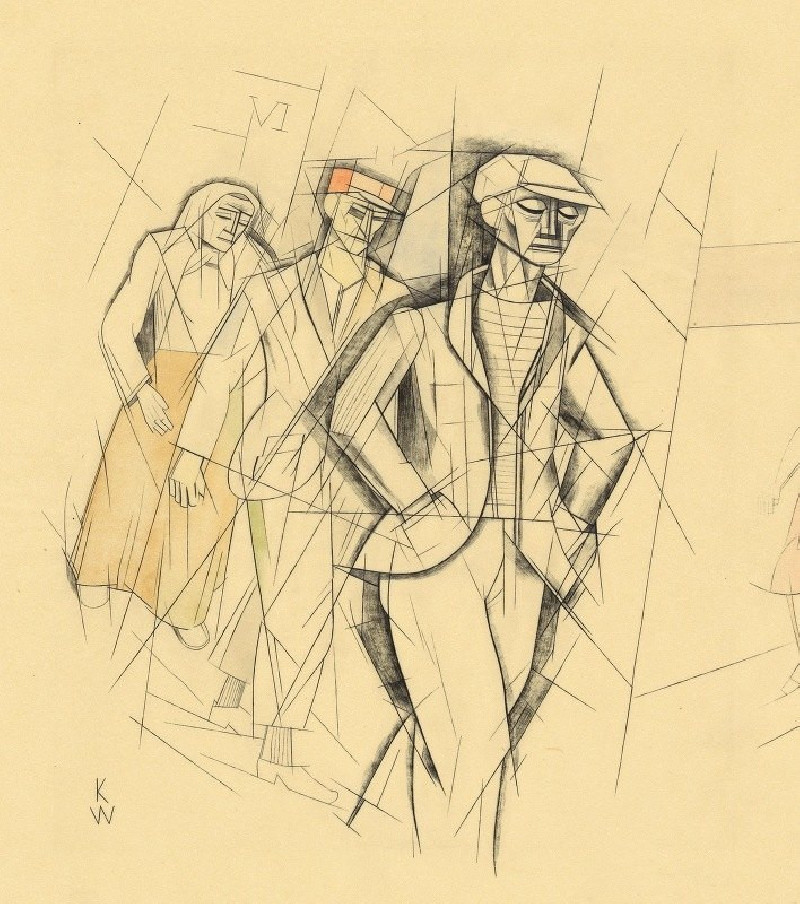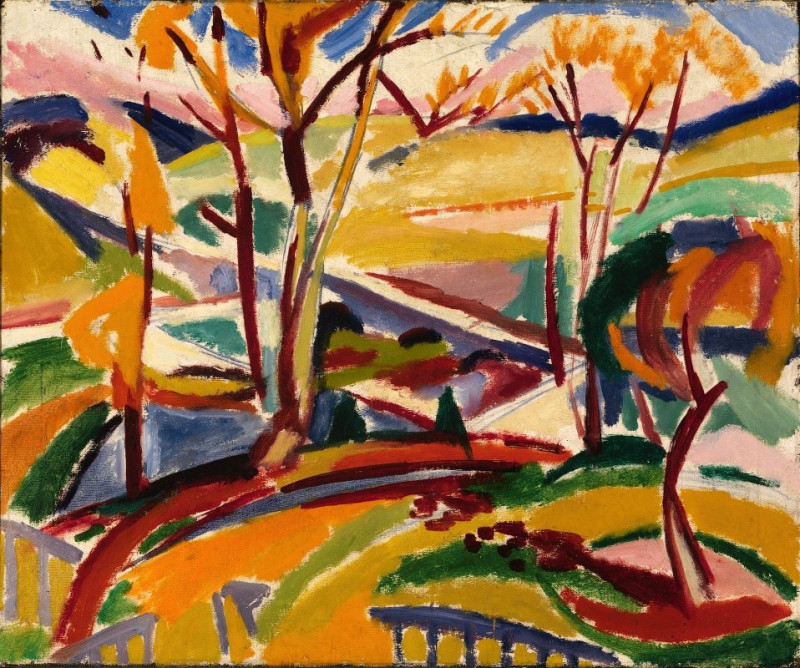Rouge et noir (1906)
Technique: Giclée quality print
Recommended by our customers
More about this artwork
Carl Larsson, a distinguished Swedish painter known for his vibrant and light-hearted depictions of family life and rural settings, presents a uniquely different mood in the artwork titled "Rouge et Noir" (Red and Black). This painting diverges from his typically colorful, joyful canvases, directing us into a more refined and contemplative direction.The beauty of "Rouge et Noir" lies in its simplicity and the evocative use of color which creates a striking contrast. The subject of the painting is a solitary female figure draped elegantly in a long, sheer gown that subtly hints at the contours of her form. The gown is adorned with delicate polka dots and fine detailing at the bust, lending an air of refined grace.She wears a vivid red cloak that falls gently from her shoulders and sweeps down to the floor, enveloping her in a rich wave of color that starkly contrasts with the soft, neutral tones of her dress. This bold red not only enhances her ethereal allure but also adds a layer of depth, suggesting a narrative of underlying strength or passion.The woman’s demeanor is serene and introspective, with her head tilted slightly downwards, and she gazes softly beyond the frame, lost in thought. The delicate handling of her posture and the soft outline of her facial features give her a vulnerable yet poised appearance.The minimalist background highlights the figure and her costume, allowing viewers to focus entirely on the emotional and visual impact of the color play and the subtle storytelling through her expression and attire.Larsson’s "Rouge et Noir" is a testament to his versatility as an artist capable of conveying complex human emotions and narratives through minimal yet powerful elements.
Delivery
Returns
Carl Olof Larsson (28 May 1853 – 22 January 1919) was a Swedish painter representative of the Arts and Crafts movement. His many paintings include oils, watercolors, and frescoes. He is principally known for his watercolors of idyllic family life. He considered his finest work to be Midvinterblot (Midwinter Sacrifice), a large painting now displayed inside the Swedish National Museum of Fine Arts.

